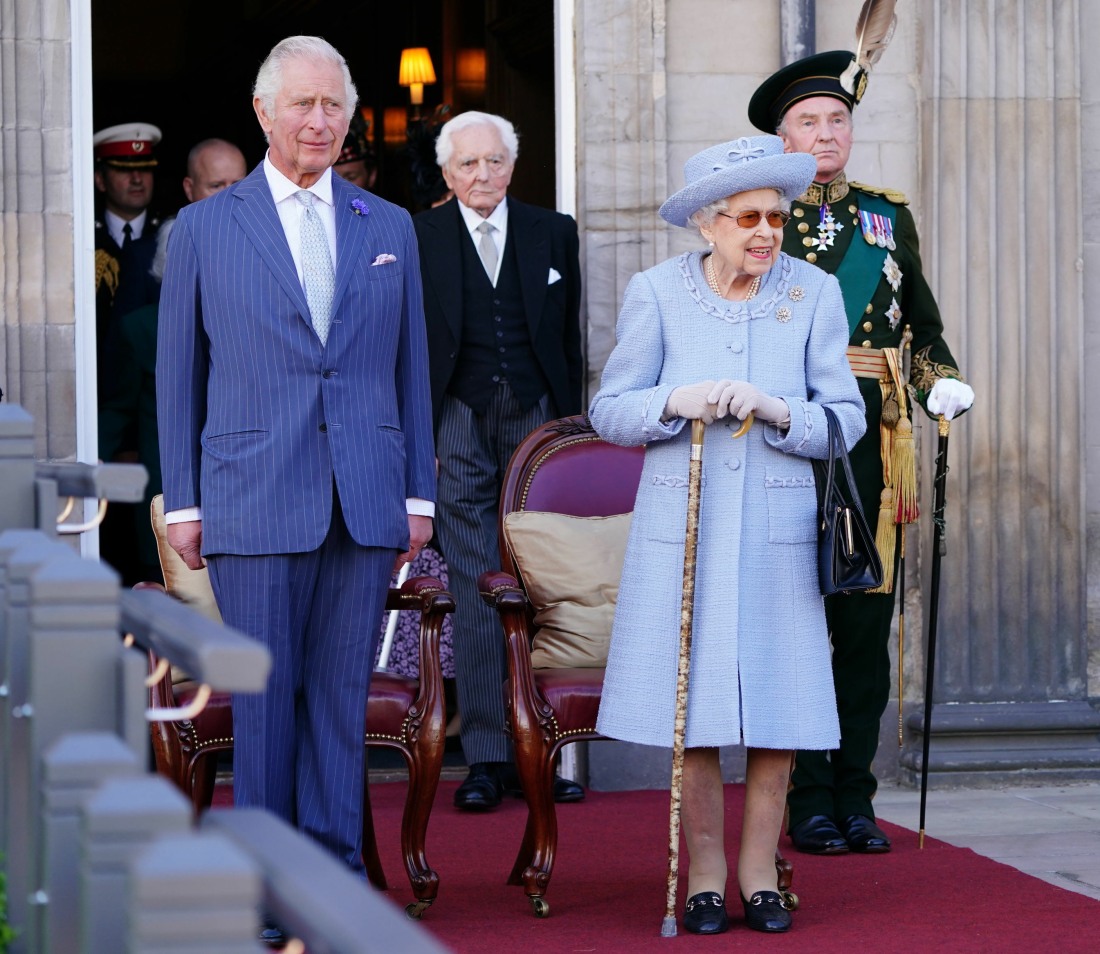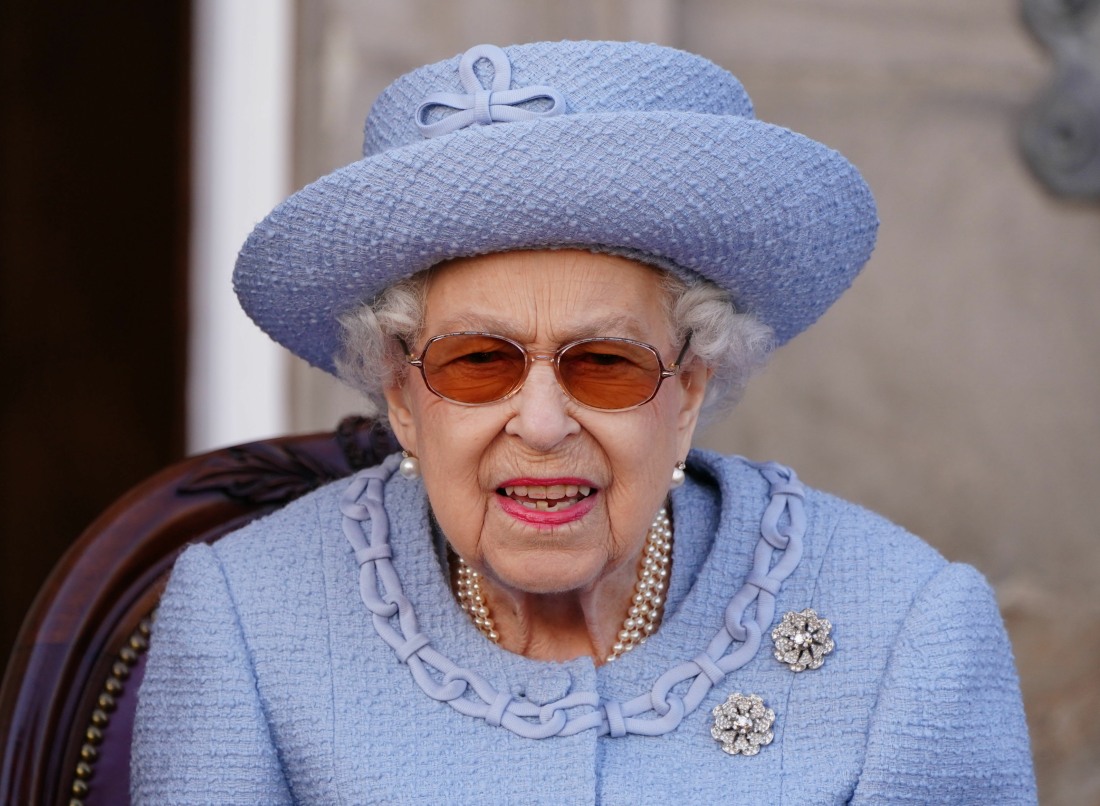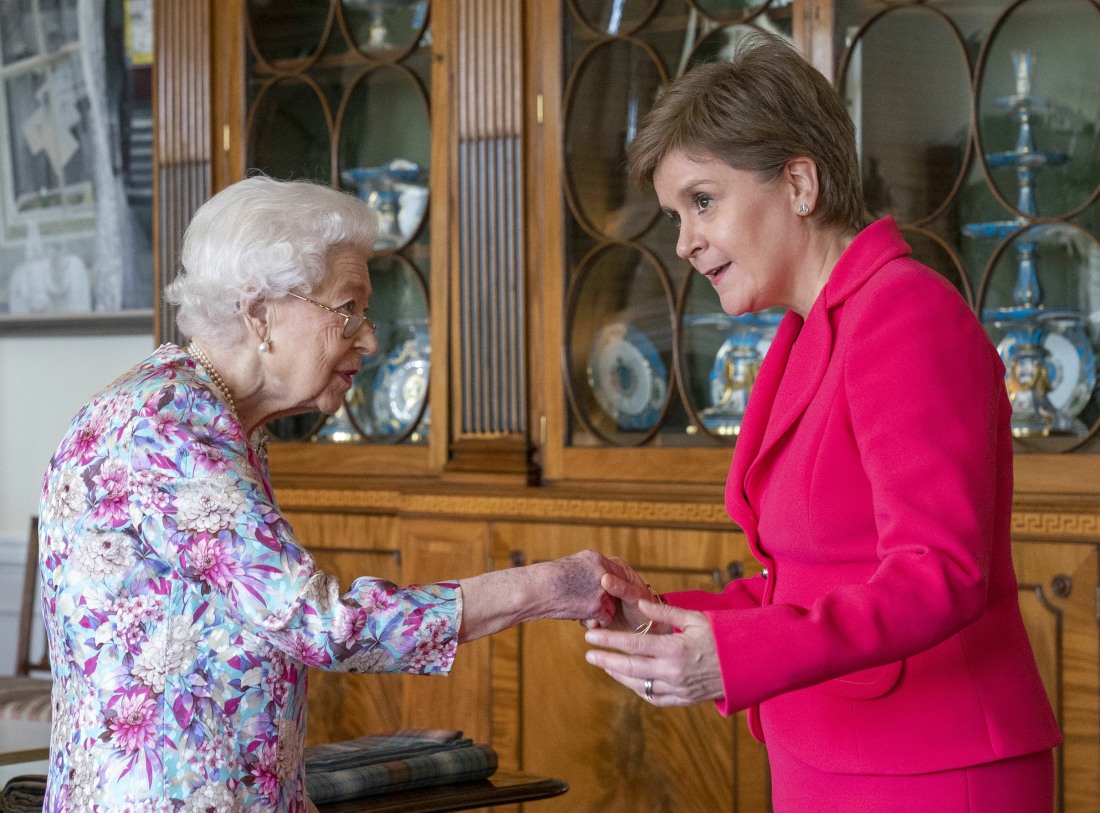Queen Elizabeth’s role & ‘duties’ have been ‘rewritten’ by Buckingham Palace
Last week, Queen Elizabeth was in Scotland for Holyrood Week. People were genuinely surprised by how many events Liz did, and how much she was seen. She had private meetings with Nicola Sturgeon and other Scottish ministers, she attended a reception at the Palace of Holyroodhouse in Edinburgh, she did the Ceremony of the Keys (or whatever it’s called) and there were several other events too. Sophie and Edward traveled with the Queen to Scotland and I think they were there the whole time. Prince Charles came up for a few days too, and he was with his mother at the reception. All in all, she was seen so much more in Scotland than she was at her own fakakta Jubbly. After leaving Scotland, the Queen traveled to Sandringham for a rest at Wood Farm. Then she’ll probably travel back to Scotland for her Balmoral summer.
The fact that a 96-year-old woman keeps up this kind of pace of traveling, eventing, standing and sitting in public, meeting privately with ministers, it’s all pretty interesting. I got the feeling that after the Jubbly, the Queen would be “allowed” to just rest and live out the rest of her days in peace. But now her aides have come up with something else, some weird compromise where they’re rewriting her “role.”
The Queen’s role has been rewritten by Buckingham Palace, as it removes duties she “must fulfil” as monarch and entrusts more to the Prince of Wales. The Queen’s “official duties” have been edited in the palace’s annual report for the first time in at least a decade, to take out specific events such as the State Opening of Parliament that were previously considered necessary by “constitutional convention”.
The new version, published following the Platinum Jubilee, places greater emphasis on the support of the wider Royal family. According to the Sovereign Grant report, signed off by Sir Michael Stevens, Keeper of the Privy Purse, the Queen’s role still comprises two key elements: Head of State and Head of Nation.
As Head of State, the “formal constitutional concept”, the Queen “must fulfil” specific duties. These were previously laid out as a 13-point list, including the State Opening of Parliament, the appointment of the Prime Minister, and paying and receiving state visits. The new version instead offers a more loose definition, saying that the Queen’s role “encompasses a range of parliamentary and diplomatic duties” and that she only “receives” other visiting heads of state.
It comes after the Prince of Wales and Duke of Cambridge jointly attended the State Opening of Parliament on the Queen’s behalf this year, as much-reported mobility problems made it too difficult for her to attend in person.
The second part of the monarch’s job description, the symbolic role of Head of Nation, is carried out by the Queen “where appropriate or necessary”. It focuses on her position inspiring “unity and national identity” and “continuity and stability”, recognising the “achievement and success” of others and ensuring “support of service” from volunteers to the emergency services and the military.
[From The Telegraph]
I suppose this is easier than attempting to formalize a Charles Regency – the Queen is immensely popular and her heir is not. If they formalized the regency – which is already in effect in everything but name – it would look like a hapless and unpopular heir is trying to usurp his mother. So this is the compromise. Everyone knows Charles will do everything his mother can’t (or won’t), and Buckingham Palace is merely changing the wording around the monarch’s duties and responsibilities. I mean…part of me is like “it’s elder abuse to continue to trot out a 96-year-old woman like this.” But another part of me acknowledges that this is the Queen’s choice, actually. She refuses to abdicate. So it is what it is.
Photos courtesy of Avalon Red, Instar.
Source: Read Full Article


